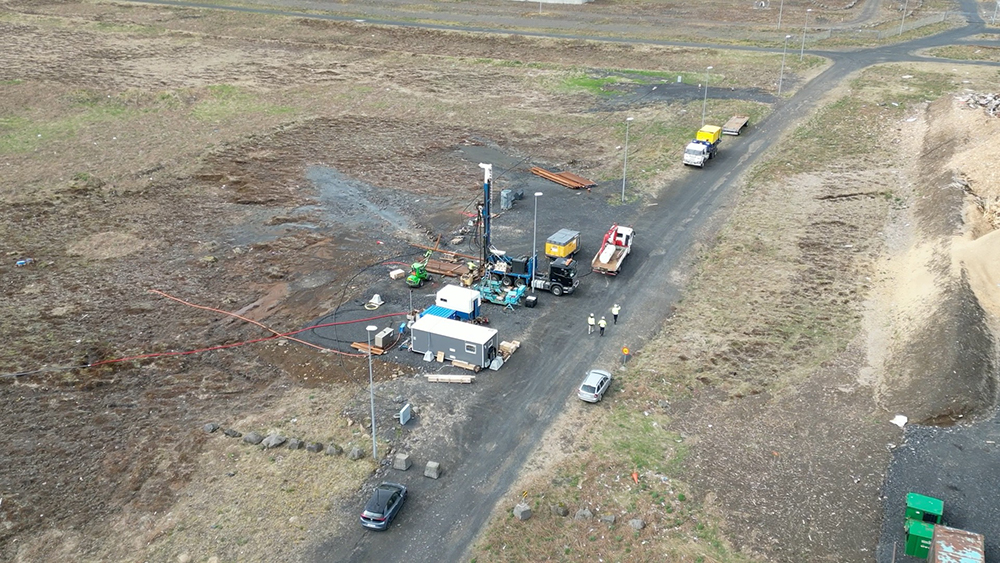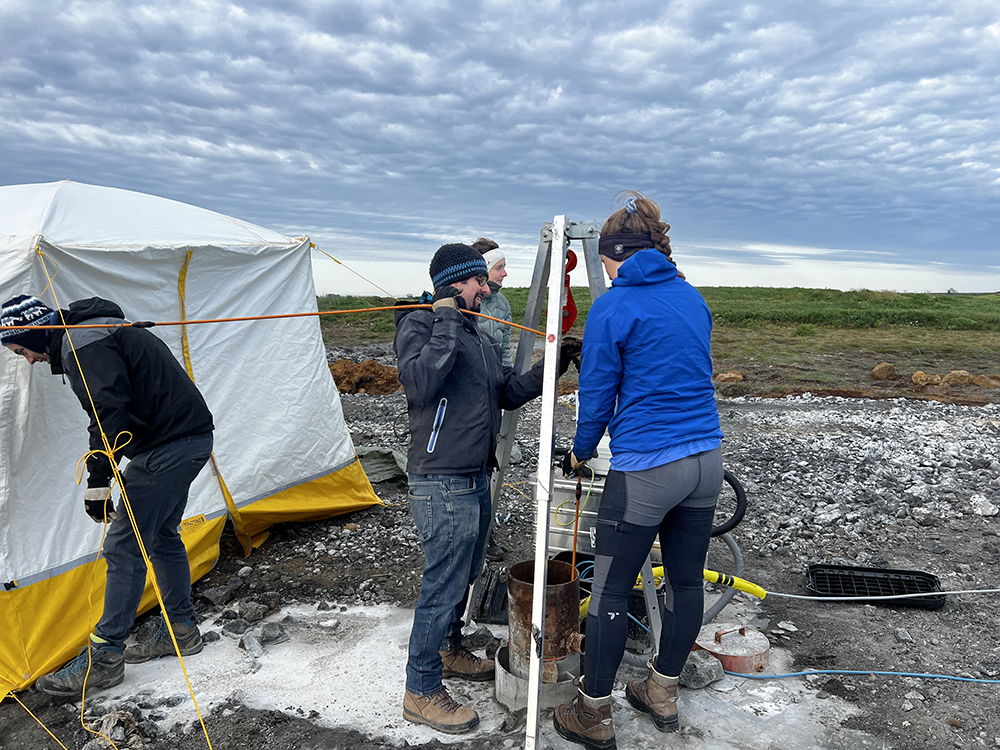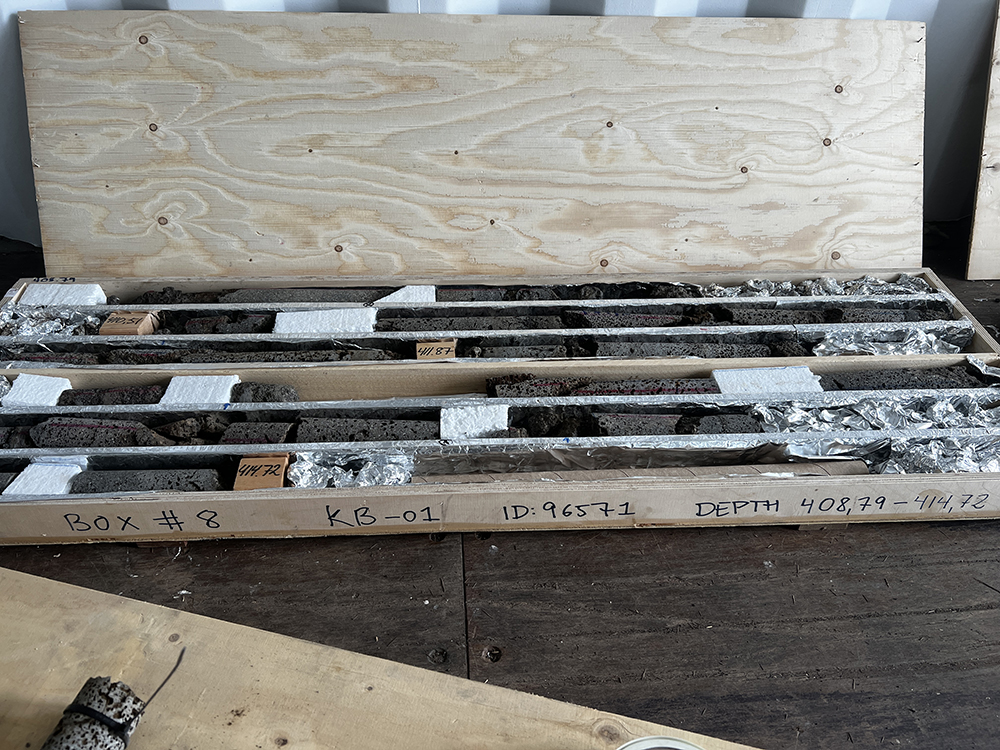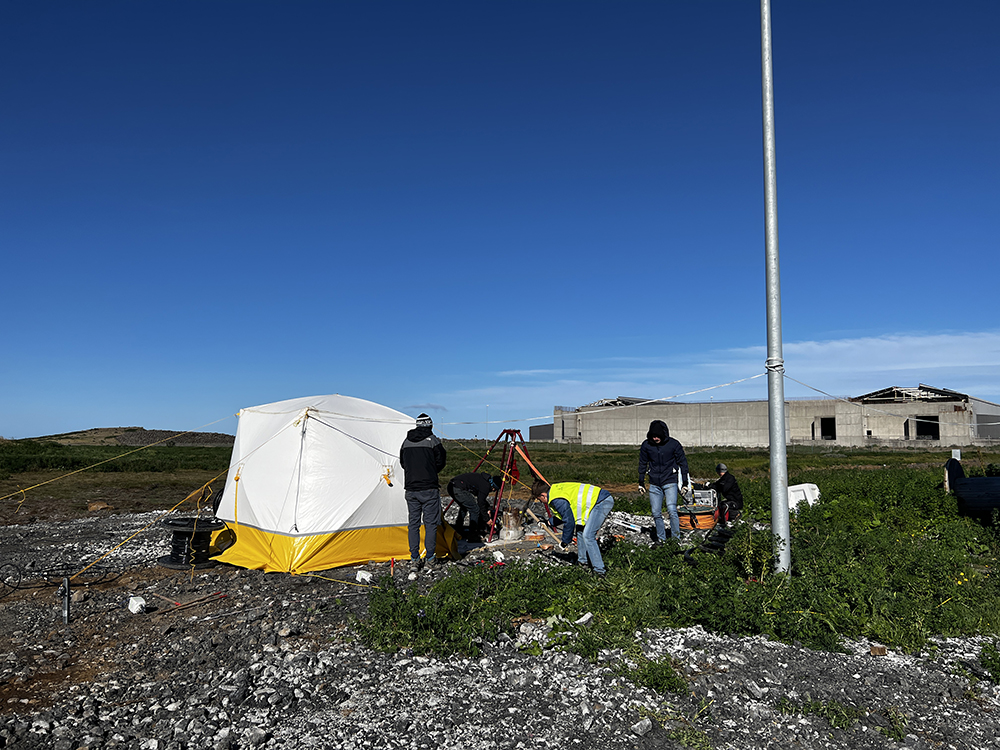#5 blog
Testing a new procedure: first injection of CO2 dissolved in seawater into basalts in Iceland
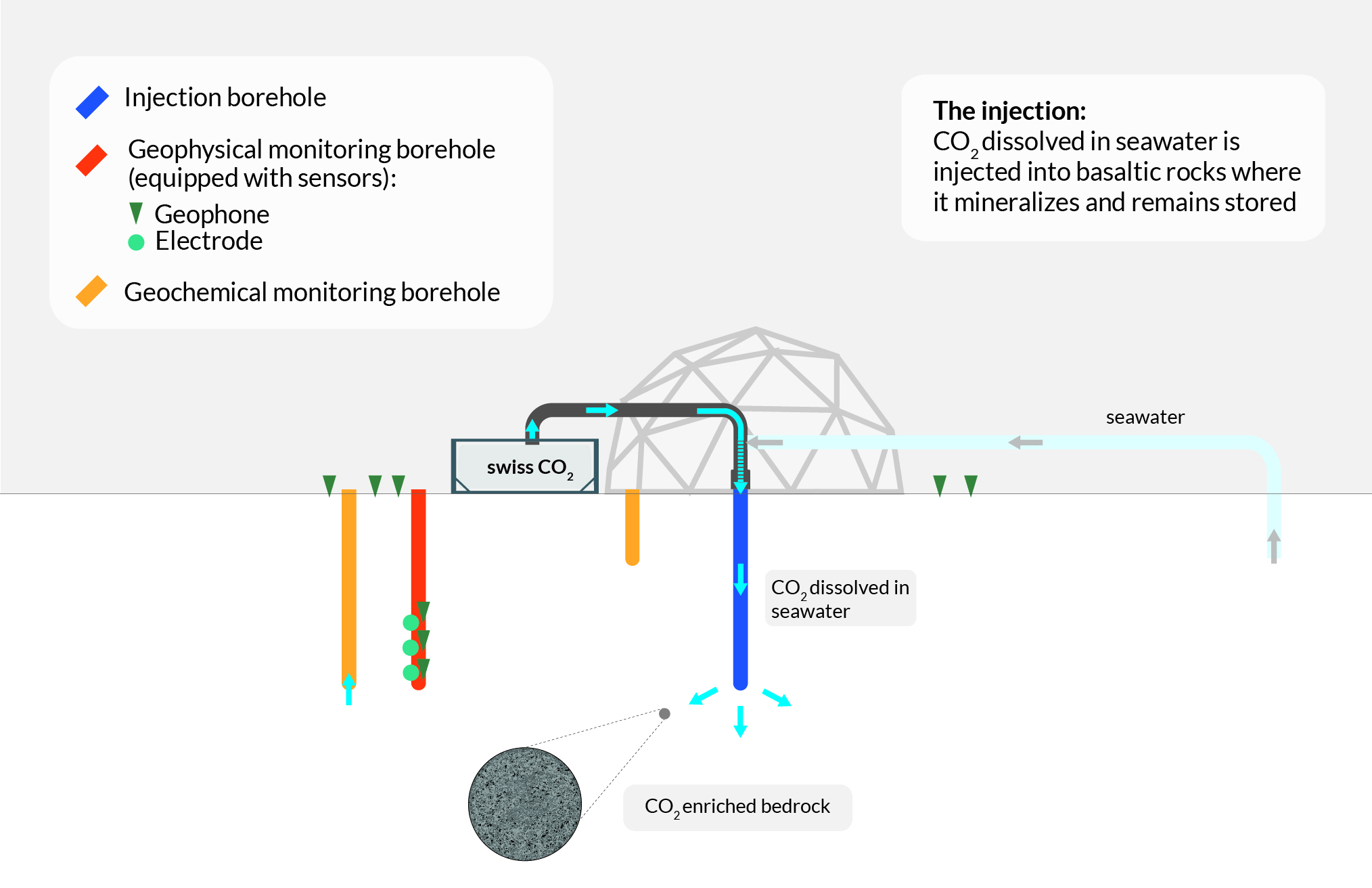
November 2023 - Alba Zappone, Stefan Wiemer, Anne Obermann
At the beginning of November, the first injection of CO2 transported from Switzerland mixed with seawater in the Icelandic underground was started. The injection is monitored with a detailed geophysical and geochemical monitoring network, designed to track fluid propagation and CO2 mineralization processes. The DemoUpCARMA and DemoUpStorage partner projects in collaboration with Carbfix will continue transporting and injecting CO2 until autumn 2024.
With the start of the injection of Swiss CO2 in Helguvík, Iceland, the project has reached an important milestone. The injection of CO2 dissolved in seawater into the basaltic subsurface at a depth of about 400 m is being tested in the field for the first time. Previously, the partner company Carbfix has been using fresh water to dissolve the CO2 to achieve subsurface mineralization. The task now is to investigate whether the procedures and mineralization process work with seawater, which Carbfix and the University of Iceland have already demonstrated under laboratory conditions, and to develop and test monitoring procedures for tracking the mineralization.
A known natural process
The process of mineralizing CO2 dissolved in seawater in basaltic structures, as pursued now in Helguvík, is not completely unknown: It is a natural process that can be observed in many parts of Iceland and at oceanic ridges (basaltic structures) at the seabed. Oceanic ridges absorb large amounts of CO2 from the degassing of magma at depth and from atmospheric CO2 that has dissolved in the seawater. Calcium, magnesium, and iron ions from the basalt react with the CO2 and form carbonate minerals such as calcium carbonates, magnesium carbonates, and iron carbonates.
In the pilot project DemoUpCARMA, biogenic CO2 transported from Switzerland to Iceland is dissolved in seawater and injected into basaltic formations, where it is expected to mineralize in the pores and fractures. Similar processes are anticipated to occur in the Islandic subsurface as observed at the seabed, so that the CO2 is ultimately immobilized as carbonate minerals and hence cannot escape into the atmosphere. Basalts are considered to be an important geological CO2 sequestration option, because it is relatively cheap and offers great storage potential coupled with low risk. Using seawater for the injection would expand the applicability of carbon mineralization in basalts to new geographical areas and thus could enable a larger climate benefit.
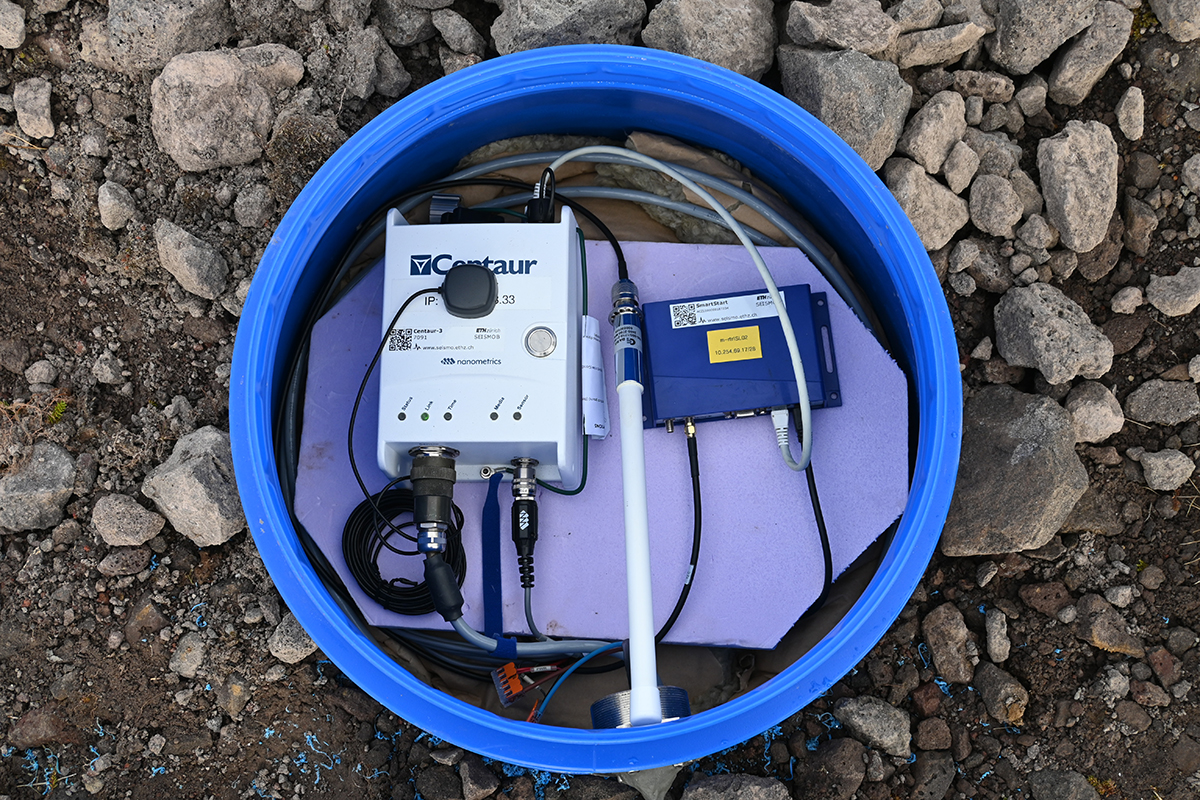
Graphic: monitoring concept of the DemoUpStorage project
Comprehensive geo-scientific monitoring and laboratory tests
Before the injection
In the framework of the DemoUpStorage pilot project, different scientific teams carry out extensive measurements before, during and after the injection. Already in summer 2022, the Swiss Seismological Service (SED) at ETH Zurich installed five seismic stations placed in a radius of 300 meters around the injection well in Iceland. The stations consist of broadband seismometers measuring the level of background seismicity. During the injection, these stations will monitor if the CO2 injection produces any induced seismicity. They can also be used to track changes in the subsurface that could potentially occur in connection with the injection of the CO2- seawater mixture and the subsequent changes in the physical properties of the rock.
After the drilling work was completed and prior to the injection, the SED conducted a first series of cross-hole seismic, fibre, ground penetrating radar (GPR), and resistivity measurements in the injection and geophysical monitoring borehole. Along with these measurements, a dense seismic array consisting of fourty nodes was temporarily set up across the injection site.
The data of the high-resolution monitoring campaign will provide a reference dataset and will allow the researchers to get a profound knowledge of the surrounding geological structures. This dataset is also crucial for developing a numerical model of the reservoir, which is the volume where the CO2- seawater mixture is distributed.
Parallel to the work in Iceland, a team of researchers from EPFL conducted laboratory tests with basaltic cores from Iceland. Rock cores were taken from locations close to the injection site and most likely represent the formations that can be found at the site in the relevant depth itself. The researchers exposed the cores to a CO2- seawater mixture for different lengths of time with a maximum time of exposure of 3.5 months. The lab results showed flow reduction, and thus carbon mineralization, already after two months in some of the tested cores. A more detailed description of the laboratory tests will soon be published in a dedicated blog text.
Image: One of the five seismometers installed around the injection site by SED.
During the injection
For the injection, the SED has deployed a dedicated geophysical monitoring borehole, where daily resistivity measurements are conducted. If the CO2 spreads and mineralizes as expected, it will become evident in the resistivity signature and seismic velocity.
Besides this continuous monitoring, the SED team will perform a series of high-resolution measurement campaigns (crosshole seismic, fibre and GPR) and repeat them to track how the CO2- seawater mixture spreads in the subsurface and track the mineralization process in the basalts.
Dissolved gases monitoring
A team led by Eawag (Swiss Federal Institute of Aquatic Science and Technology) researchers employs geochemical monitoring techniques, including the deployment of a mobile mass spectrometer called “miniRuedi”, developed at Eawag. Connected to the geophysical boreholes to detect dissolved gases at the depth of the injection (ca. 400 m), the mobile mass spectrometer plays a crucial role in this monitoring process. Additionally, it is linked to a dedicated geochemical monitoring borehole that intercepts the shallow water table. This setup allows to monitor the potential degassing and up-flow of CO2 at shallow depth, thus assessing the risk of CO2 escaping from the depth into shallower aquifers, and eventually into the atmosphere.
The pilot injection will offer valuable insights for future attempts to inject and permanently store CO2 as carbonate minerals in basaltic structures using seawater, an abundant resource. Oceanic and terrestrial basalts have an enormous theoretical capacity for mineral storage of CO2. This method could thus make a significant contribution to achieving global climate targets by mineralizing large quantities of CO2 underground and thus storing it permanently.



